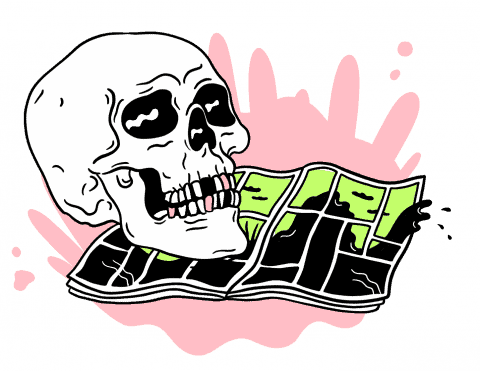 Horror comic books have seen a resurgence in the last decade, and strangely enough, artists and writers from Saskatoon have been leading the charge. For those in the know, this shouldn’t come as a shock.
Horror comic books have seen a resurgence in the last decade, and strangely enough, artists and writers from Saskatoon have been leading the charge. For those in the know, this shouldn’t come as a shock.
Image Comics — the imprint founded by Spawn artist Todd McFarlane and later redefined by creator of The Walking Dead Robert Kirkman as the genre-comics arthouse that it is today — has been drawing on Western Canadian creators for a long time now.
Partially because of the massive multimedia success of The Walking Dead, it seems that Image Comics has been leaning into the horror genre in an attempt to find their next crossover success story. However, the history of modern horror comics can be traced back to the launch of the Vertigo publishing arm of DC Comics and the British Invasion of superhero comics.
Vertigo was originally meant to serve as an extension of the DC Universe wherein forgotten characters could be reimagined by new writers. This era lead to Neil Gaiman’s gothic take on the Sandman character, Alan Moore’s celebrated Saga of the Swamp Thing and the long-running Hellblazer series — all of which brought horror elements to the superhero genre.
Artists like Calgary’s Fiona Staples and Saskatoon’s Riley Rossmo have become Image staples and have had a strong influence on the house style of the imprint. Rossmo has become one of the defining horror artists working today thanks to his prolific work and versatility as an artist.
While only a fraction of the series that Rossmo has contributed to are horror related, his bold sketchy style and knack for nightmarish imagery are best suited to horror. Green Wake — his collaboration with writer Kurtis J. Wiebe, who was formerly based in Saskatoon — stands as one of his best works.
The initial run of Green Wake was a huge success, gaining attention from indie comics fans, but it didn’t have the staying power necessary to continue that momentum. Green Wake was a murder mystery that combined film noir with the kind of psychological horror made popular by Silent Hill. The initial run is worth a look for the art alone if you can track it down.
Rossmo’s other horror series, Bedlam, was a dark take on the Batman-Joker dynamic. It’s a good horror comic, but it works even better as a deconstruction of the superhero genre. Bedlam ran for only 11 issues, and its second arc featured a different artist.
Another horror comic originating from Saskatoon is Antique Books by Scott Bryce, who launched the series independently through Kickstarter. Antique Books is an updated version of Alien set inside a bookstore. The project passed its $3,000 kickstarter goal and raised over $11,000.
Another modern example of the genre is Canadian writer and artist Jeff Lemire’s take on cosmic horror, Gideon Falls. Batman writer Scott Snyder has also been a defining voice of horror comics thanks to his work on Wytches and his collaboration with Stephen King on American Vampire.
Horror comics offer something different when it comes to Halloween entertainment options. Combining the pacing of a novel with the visceral imagery of a film, comic books are a surprisingly fitting medium for the genre. It’s also a good excuse to check out your nearest comic shop and support a local business.
Horror comics provide an entire untapped vein of scary media, and with much of the best work in the medium happening locally, it’s absolutely worth checking out.
—
Cole Chretien / Culture Editor
Graphic: Jaymie Stachyruk / Graphics Editor